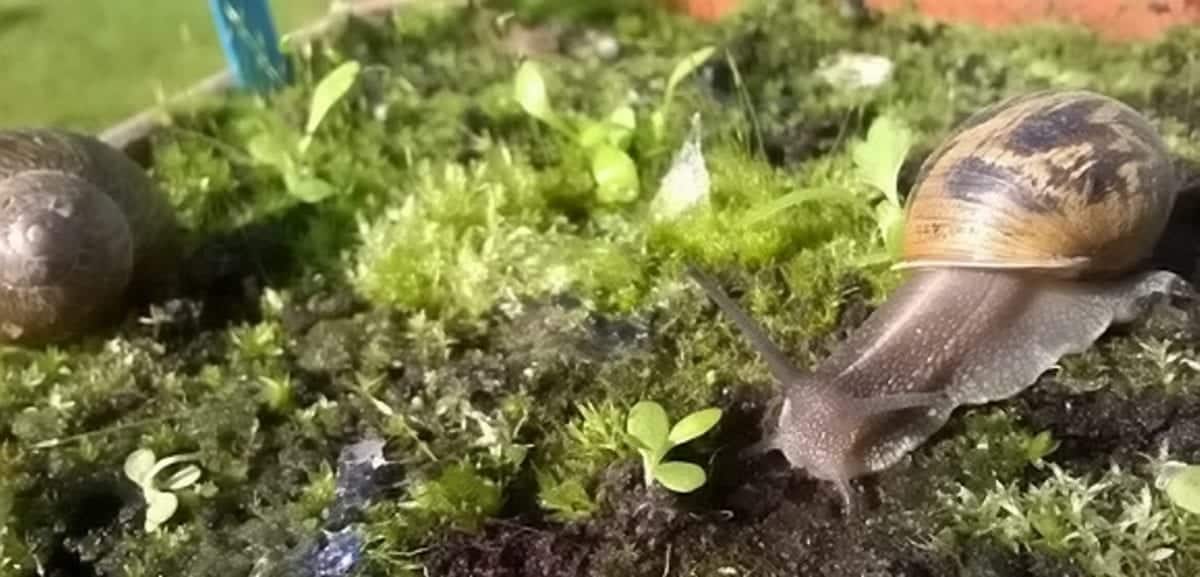
Slugs and snails are the bane of gardeners’ lives because of their extraordinary sense of smell, suggests new research.
They have four retractable tentacles on their head – which they use to sniff out their favourite grub, according to the study.
The discovery sheds fresh light on the feeding habits of the pests that destroy prized plants and vegetables – a phenomenon that even stumped Charles Darwin.
Home owners have puzzled for years as to why some seedlings are more commonly eaten by slugs and snails than others.
It’s because of their fragrance – not taste as previously believed. It means some seedlings have an evolutionary advantage thanks to developing natural repellants.
Over the years gardeners have used beer, salt, coffee, bran flakes and even copper piping to banish the critters. None have been totally successful.
The breakthrough could lead to the development of new sprays with a pungent whiff.
Despite their small size slugs and snails have an extraordinary 20,000 and 14,000 minute teeth respectively – tightly packed in rows.
But it is the aromas produced by young seedlings in the early stages of their development that decides those that are decimated and others that are left alone.
An analysis of the preferences of hundreds of snails presented with seedlings of 14 different grassland species found those they attacked depended on whether they liked the volatile scents.
The study, published in the journal Annals of Botany, also provides a better understanding of the important role slugs and snails play in natural ecosystems. The average British garden has 20,000 at any one time.
Corresponding author Dr Mick Hanley said: “Slugs and snails are just as damaging to seedlings in natural habitats like grasslands as they are gardens.
“But we have known for many years not all grassland species suffer the same likelihood of attack.
“This is important because variation in where and when terrestrial molluscs are active can have significant impacts on which species survive the vulnerable seedling stage.
“In effect, by removing some plant species as seedlings, slugs and snails help dictate the nature of the established vegetation.”
The research builds on a previous smaller study which focused specifically on oilseed rape.
This suggested harnessing naturally occurring chemicals could be used as a means to protect crop seedlings being eaten by common pests.
Dr Hanley and colleagues collected snails around Plymouth and Southampton presented them with the variety of seedlings – with their choices being recorded.
Each was then characterised for the presence of common defensive compounds and volatile organic compounds (VOCs) associated with taste and smell respectively.
It showed the seedlings they preferred was strongly related to the VOCs – picked up by their olfactory senses.
Dr Hanley said: “Charles Darwin recognised long ago the destructive impact that snails and slugs have on young seedlings.
“Yet since his observations biologists have never fully understood why these herbivores select particular plant species at their most vulnerable life history stage.
“We had believed for many years molluscs chose seedlings based on their taste. But for a tiny seedling, even a single bite from a snail would probably be fatal.
“Our research suggests seedlings of some species use repellent volatile chemicals to prevent slug or snail damage before it occurs and so avoid any damage at all.
“This will give seedlings with this ability a tremendous advantage in terms of their recruitment probability at times when slugs or snails are abundant.”
Slugs live largely underground in the soil. What you see above the surface is the tip of a very large slug-berg. Snails live above ground and love dark nooks and crannies.
Slugs are active all year round but snails are dormant during autumn and winter.
Densities of 200 slugs per square metre are moderate. In one experiment 27,500 slugs were taken from one small garden without making any noticeable difference to activity.
The favourite plants of slugs and snails include basil, beans, begonias, cabbage, hostas, lettuce, strawberries and turnips.
They love tender, succulent leaves so choosing plants with leathery, stiff or aromatic leaves lessens the trouble you will have. Most woody plants and ornamental grasses are resistant.
By Ben Gelblum and Mark Waghorn